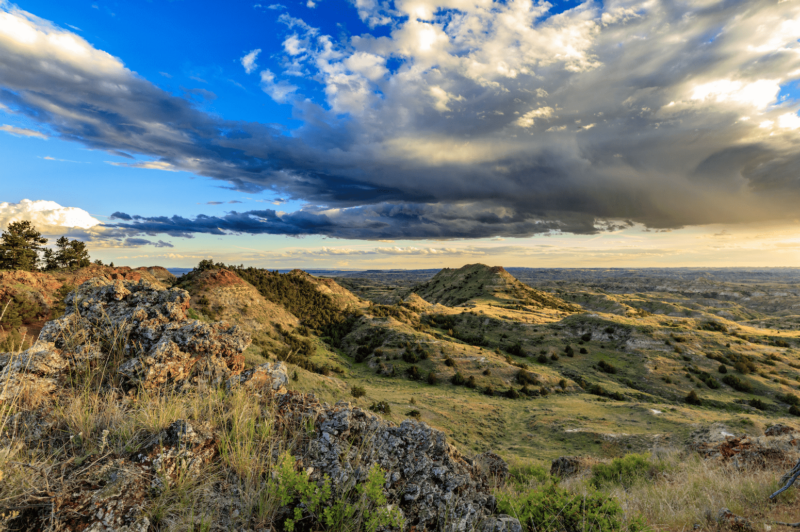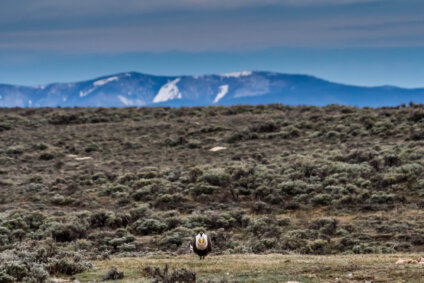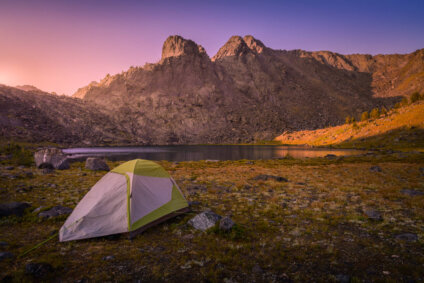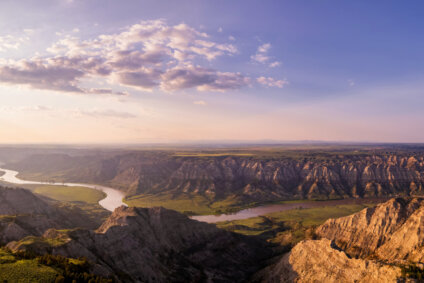Wild and Connected: Montana’s Prairie Wildlands
How we’re building a wild and prosperous future in eastern Montana

Wild Montana is connecting, uniting, and mobilizing people and communities to secure a future where people and wildlife flourish because public lands and waters are wild and connected. This is the second in a series by Wild Montana Board President Debo Powers exploring some of the communities and wild places central to our mission.
Birdsong filled the air in the Bitter Creek Wilderness Study Area. Curlew, meadowlark, horned lark, eastern kingbird, brown cowbird, killdeer, and bobolink joyously flitting, soaring, nesting, playing, singing. Wildflowers in a myriad of colors adorned the still-green grassland. The wind blew unceasingly, the big sky stretched across the horizon, and stone-tool marks, evidence of the area’s long A’aninin (Gros Ventre), Assiniboine (Sioux), Michif Piyii (Metis), and Apsaalooké (Crow) history, revealed themselves to the careful observer.
Eastern Montana’s prairie grasslands were the second stop on my statewide tour celebrating the unveiling of our new name, Wild Montana. I’m spending six weeks traveling Montana visiting some of the wild places that we’re working to protect and hiking and talking with some of the local activists that are key parts of the incredible grassroots network that makes Wild Montana such a powerful force for Montana’s wildlands.
While uniquely wild, Eastern Montana often flies under the radar. The rugged badlands, rolling grasslands, coulees, and river breaks that cover much of the region provide habitat for thriving populations of deer, elk, pronghorn, and sage grouse and abundant opportunities for hiking, camping, and hunting for residents and visitors alike. Hundreds of thousands of public land acres in eastern Montana are also locked up as a result of an outdated process called noncompetitive leasing, in which oil and gas companies buy up speculative leases for $2 or less an acre. These leases result in virtually no oil or gas production, little tax revenue, few jobs, and scant benefit to anyone except those who buy these leases on the cheap to pad their investment portfolios. Montana is ground zero for noncompetitive leasing, and we’re proud to lead the charge to put an end to this practice, including supporting a bill introduced by Sen. Jon Tester that would do just that.
Reforming outdated oil and gas leasing practices would be a boon to eastern Montana’s communities, which would benefit from increased tax revenue, new jobs, and better recreation opportunities. One of the highlights of my tour has been talking to people in different small towns at the gas pump, in the local bar and grill, in grocery stores, or in local museums and hearing about the public land, economic, and recreation issues that matter to them. The Wild Montana signs on the truck attracted many conversations, almost all of which were positive.
I met Wild Montana State Policy Director Noah Marion in Terry. He and Montana State Parks and Recreations Board Chair Angie Grove took me into the Terry Badlands WSA and talked about the ways Wild Montana is leading public lands initiatives to support the wildlands, outdoor economy, and quality of life around small towns like Terry. The biggest of these projects is the Lower Yellowstone River Coalition, which is working with Montana Fish, Wildlife & Parks and local residents on an ambitious plan to protect habitat and increase public access along 150 miles of the Lower Yellowstone River between Hysham and the North Dakota border.
The diversity of eastern Montana’s wildlands is remarkable. In the Terry Badlands, we marveled at the colorful sedimentary layers that seemed more typical of the southwestern United States than Montana. The plains prickly pear cactus were in bloom and the sun felt hot on our shoulders. Junipers crowded into coulees where they could find a little moisture and the short grasses were crunchy under our boots.
These prairie lands speak deeply to me and I find great satisfaction in their wild beauty. My great-grandparents homesteaded in central North Dakota and family members still farm on the open plains that are the ancestral homelands of the Indigenous peoples of the Great Plains. I visited those farms every summer during my childhood and the smells of the prairie and the wind in my face feel like home. I’m so proud that Wild Montana is committed to protecting these unique wildlands, and I’m incredibly excited to see what the future holds for Eastern Montana’s communities and wild places.
Stay Connected
"(Required)" indicates required fields


